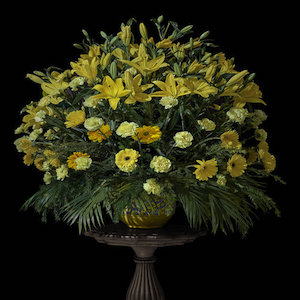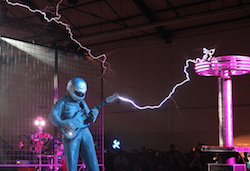 For millennia, humans have used every conceivable item as an instrument to create music. We bang on things, blow on things, pluck things, affix electrodes and microphones. We use natural objects, found objects, deconstructed objects, repurposed objects. Is there anything we haven’t thought of? Here is a partial list of interesting sources from fire to roads that we’ve used to create unique, odd instruments. Continue reading →
For millennia, humans have used every conceivable item as an instrument to create music. We bang on things, blow on things, pluck things, affix electrodes and microphones. We use natural objects, found objects, deconstructed objects, repurposed objects. Is there anything we haven’t thought of? Here is a partial list of interesting sources from fire to roads that we’ve used to create unique, odd instruments. Continue reading →
Odd instruments to shock and amuse
 For millennia, humans have used every conceivable item as an instrument to create music. We bang on things, blow on things, pluck things, affix electrodes and microphones. We use natural objects, found objects, deconstructed objects, repurposed objects. Is there anything we haven’t thought of? Here is a partial list of interesting sources from fire to roads that we’ve used to create unique, odd instruments. Continue reading →
For millennia, humans have used every conceivable item as an instrument to create music. We bang on things, blow on things, pluck things, affix electrodes and microphones. We use natural objects, found objects, deconstructed objects, repurposed objects. Is there anything we haven’t thought of? Here is a partial list of interesting sources from fire to roads that we’ve used to create unique, odd instruments. Continue reading →

 Did you know plants make music? I found that out today when I stumbled on an exhibit of digital photographs by T.M. Glass, hosted at Ontario College of Art and Design University gallery space on Richmond Street. The enormous photographs are breathtaking. From ten feet back, they look like perfectly composed photographs (which they are). Floral arrangements spring from exquisite vases, usually set against a black backdrop. But up close, the images have been digitally manipulated with miniature swirls that recall the undulations of Van Gogh.
Did you know plants make music? I found that out today when I stumbled on an exhibit of digital photographs by T.M. Glass, hosted at Ontario College of Art and Design University gallery space on Richmond Street. The enormous photographs are breathtaking. From ten feet back, they look like perfectly composed photographs (which they are). Floral arrangements spring from exquisite vases, usually set against a black backdrop. But up close, the images have been digitally manipulated with miniature swirls that recall the undulations of Van Gogh.  What better way to celebrate summer than with a tribute post to lightning and summer thunderstorms? The Texas performance group ArcAttack creates music with lightning. They do it with a form of plasma speaker called a “singing Tesla coil” (also known as a zeusaphone, thoramin or musical lightning), a solid state Tesla coil that has been modified to produce musical tones by modulating its spark output. The resulting pitch is a low fidelity square wave like that produced by an analog synthesizer. The musical tone results directly from the passage of the spark through the air.
What better way to celebrate summer than with a tribute post to lightning and summer thunderstorms? The Texas performance group ArcAttack creates music with lightning. They do it with a form of plasma speaker called a “singing Tesla coil” (also known as a zeusaphone, thoramin or musical lightning), a solid state Tesla coil that has been modified to produce musical tones by modulating its spark output. The resulting pitch is a low fidelity square wave like that produced by an analog synthesizer. The musical tone results directly from the passage of the spark through the air.  Deep in the heart of Virginia’s Shenandoah Mountains sits Luray Caverns. The cave is fairly impressive as caves go. But more remarkably, it is home to the Great Stalacpipe Organ. The organ is a lithophone: basically, an instrument that produces sound by hitting a rock. In this case, solenoid-activated rubber mallets strike stalactites of varying sizes, each chosen to correspond to tones of the musical scale. An organ console with a keyboard (pictured at left) activates the mallets. Leland Sprinkle designed and implemented the organ in 1956 over three years.
Deep in the heart of Virginia’s Shenandoah Mountains sits Luray Caverns. The cave is fairly impressive as caves go. But more remarkably, it is home to the Great Stalacpipe Organ. The organ is a lithophone: basically, an instrument that produces sound by hitting a rock. In this case, solenoid-activated rubber mallets strike stalactites of varying sizes, each chosen to correspond to tones of the musical scale. An organ console with a keyboard (pictured at left) activates the mallets. Leland Sprinkle designed and implemented the organ in 1956 over three years.